What is it lichenoid keratosis?
Lichenoid keratosis is usually a small, solitary, inflammatory swelling. taint or thin pigmented license plate. Multiple eruptive lichenoid keratosis in sites exposed to the sun they are also described. Its color varies from an initial reddish brown to a purple/grayish brown like the injury resolves several weeks or months later.
Lichenoid keratosis is also known as benign lichenoid keratosis, solitary lichen planus, lichen planus type keratosis and involuntary lichenoid plaque. They are one of the causes of atypical solar lentigo.
Who gets lichenoid keratosis?
Lichenoid keratosis usually develops in light-skinned patients aged 30 to 80 years. It is twice as common in women as in men. It is most commonly seen in Caucasians and rarely affects Asians, African Americans, or Hispanics.
What causes lichenoid keratosis?
Lichenoid keratosis is a inflammatory reaction that arises in a retreat of the existing solar lentigo or seborrheic keratosis It is not known what causes the reaction, but triggers include mild trauma such as friction, drugs, dermatitisand sun exposure.
Lichenoid keratosis
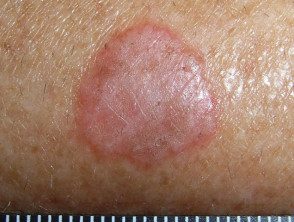
Lichenoid keratosis
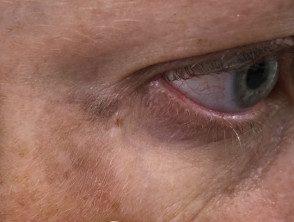
Lichenoid keratosis
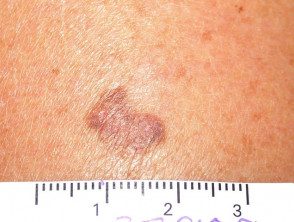
Lichenoid keratosis
How is lichenoid keratosis diagnosed?
Lichenoid keratosis is diagnosed by its clinical and dermoscopic appearance, which reveals uniform clusters of gray dots and, depending on the stage of the lesion, may show signs of an original pre-existing lentigo or seborrheic keratosis. Over time, signs of the original injury disappear. Later, the gray spots also disappear as the lesion resolves to reveal normal skin.
Dermatoscopy of lichenoid keratosis
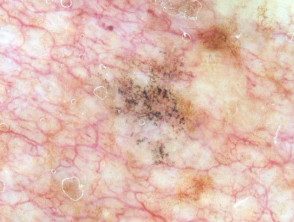
Lichenoid keratosis
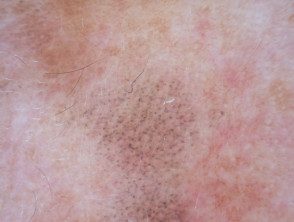
Lichenoid keratosis

Lichenoid keratosis
Because clinical examination and dermoscopy may not be able to differentiate between lichenoid keratosis and other forms of isolation. erythematous injuries that could be melanocytic, benign non-melanocytic, evil one or inflammatory, a blow or shaving the skin biopsy it can be necessary
Histopathology It resembles that of lichen planus or lichenoid dope eruption, with some slight differences. Remnants of the original solar lentigo or seborrheic keratosis may be evident.
What are the clinical characteristics of lichenoid keratosis?
The clinical characteristics of lichenoid keratosis vary depending on the inflammatory stage of the lesion.
| Classic, bullous or atypical subtype | |
|---|---|
| Clinical features |
|
| Histopathology |
|
| Early or interface subtype | |
| Clinical features |
|
| Histopathology |
|
| Returned late or atrophic subtype | |
| Clinical features |
|
| Histopathology |
|
Other characteristics of lichenoid keratosis are:
- A solitary lesion is present in 90% cases of lichenoid keratosis, and other patients have few or many lesions.
- It is most commonly found on the upper trunk, followed by the distal upper extremities, and less frequently in the head and neck.
- The size varies from a few millimeters to a centimeter or more in size.
- The skin surface may be smooth, scaly or warty.
- The lesion often has no symptoms or may be itchy or have a mild stinging sensation.
What is the management of lichenoid keratosis?
Lichenoid keratosis is harmless and resolves spontaneously. If there is any doubt about the diagnosis, digital dermoscopic images can be taken and used in follow-up a few months later.
Lichenoid keratosis can be removed if desired using liquid nitrogen, electrosurgery, or curettage.
Multiple eruptive lichenoid keratoses can be effectively treated with oral administration retinoidacitretin
To date there have been no reports of lichenoid keratosis developing into malignant skin tumors.

